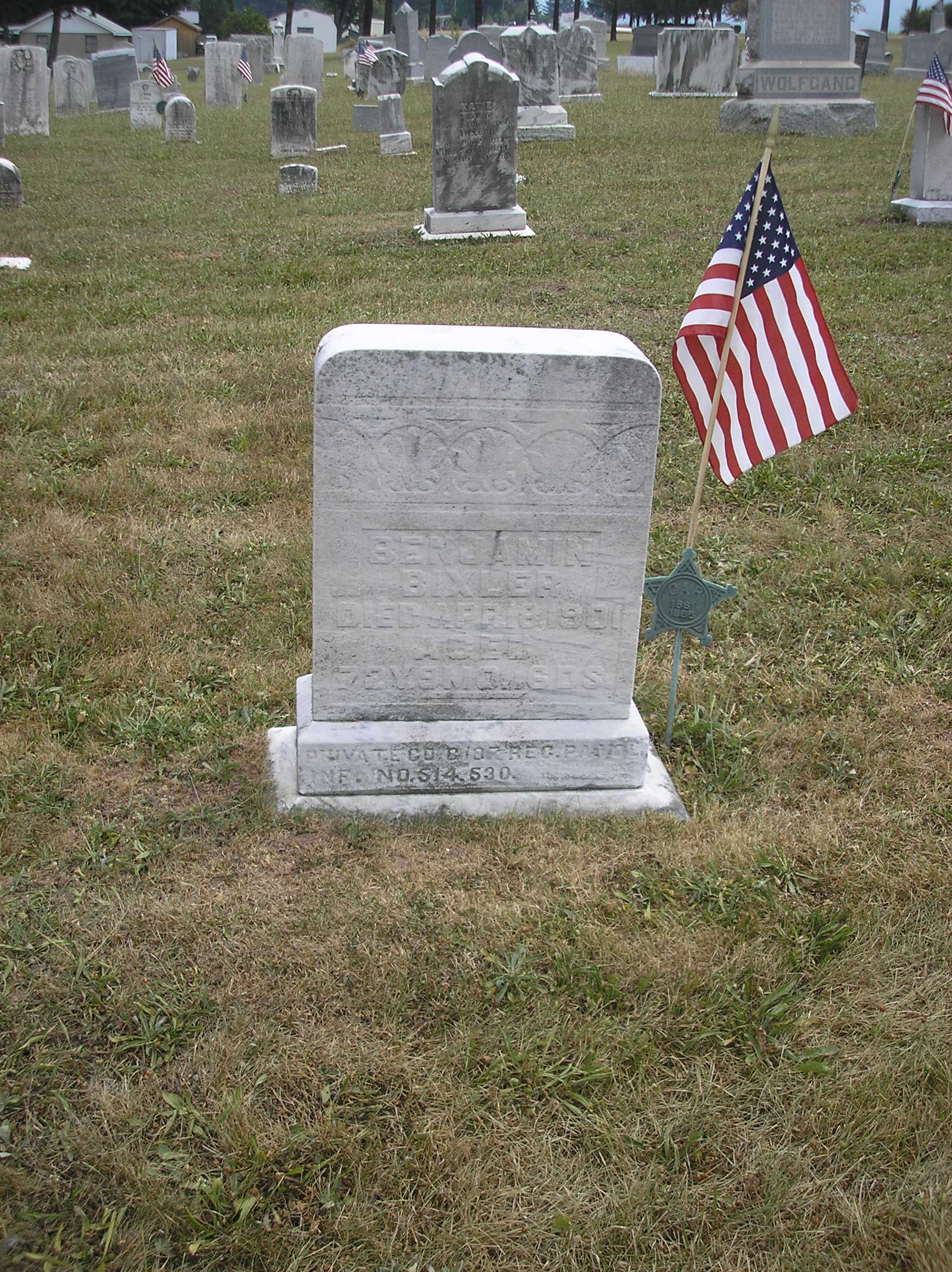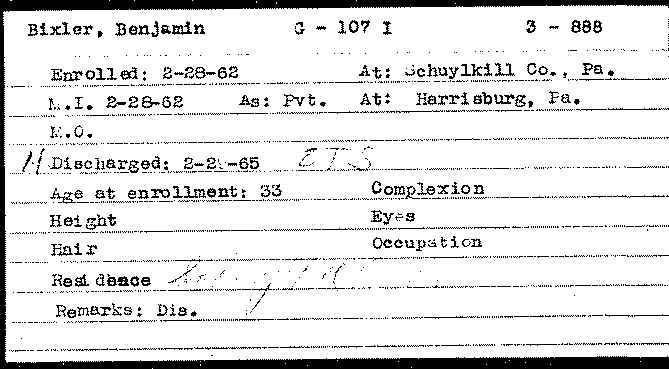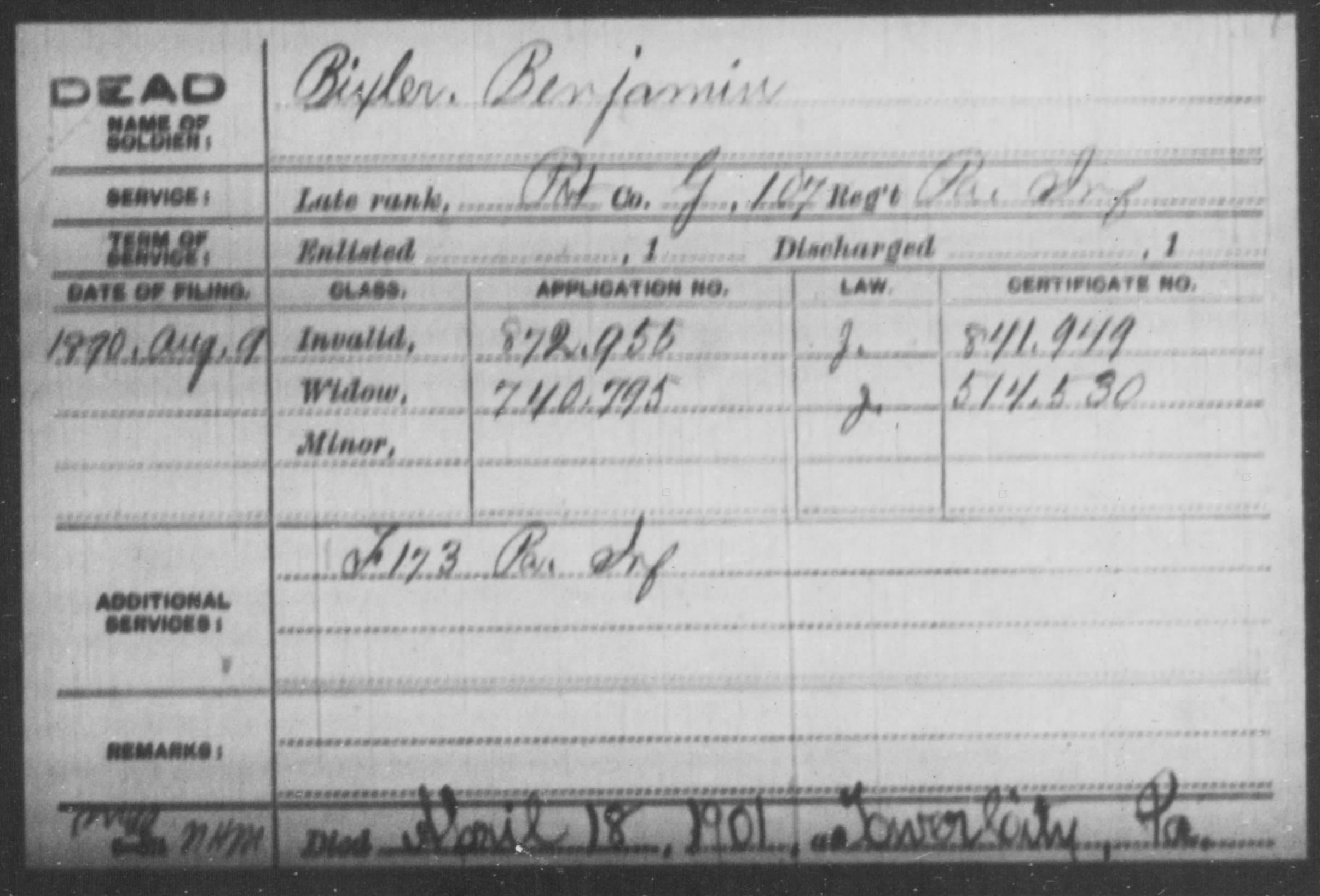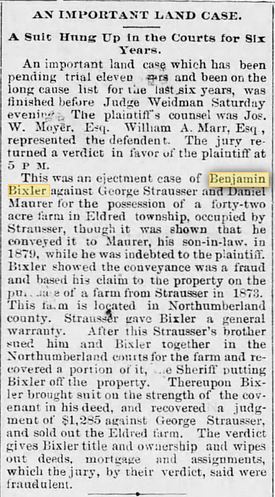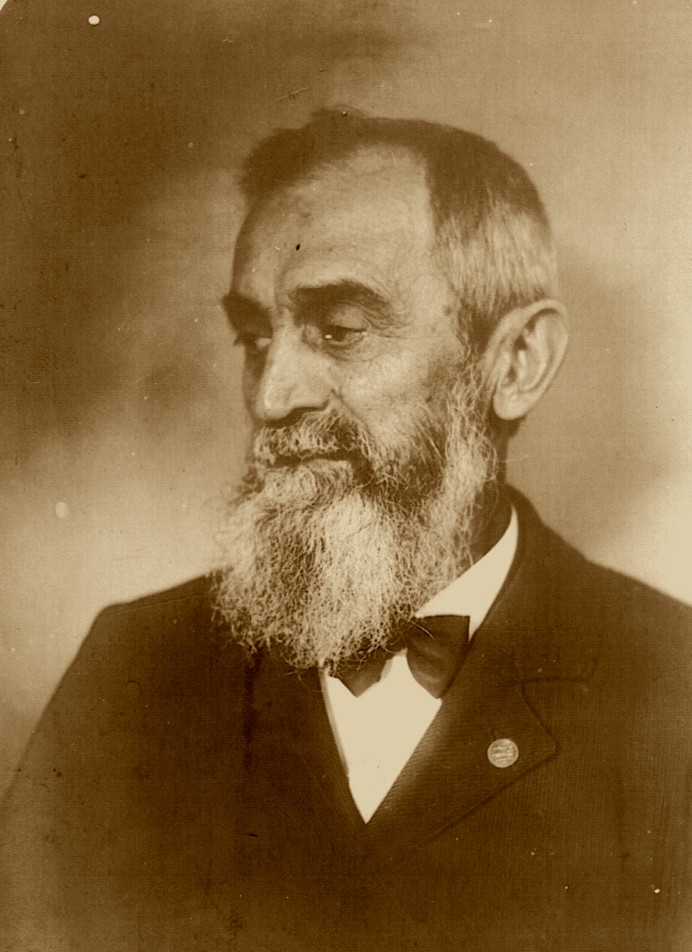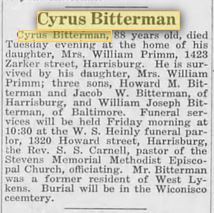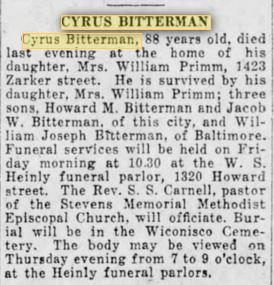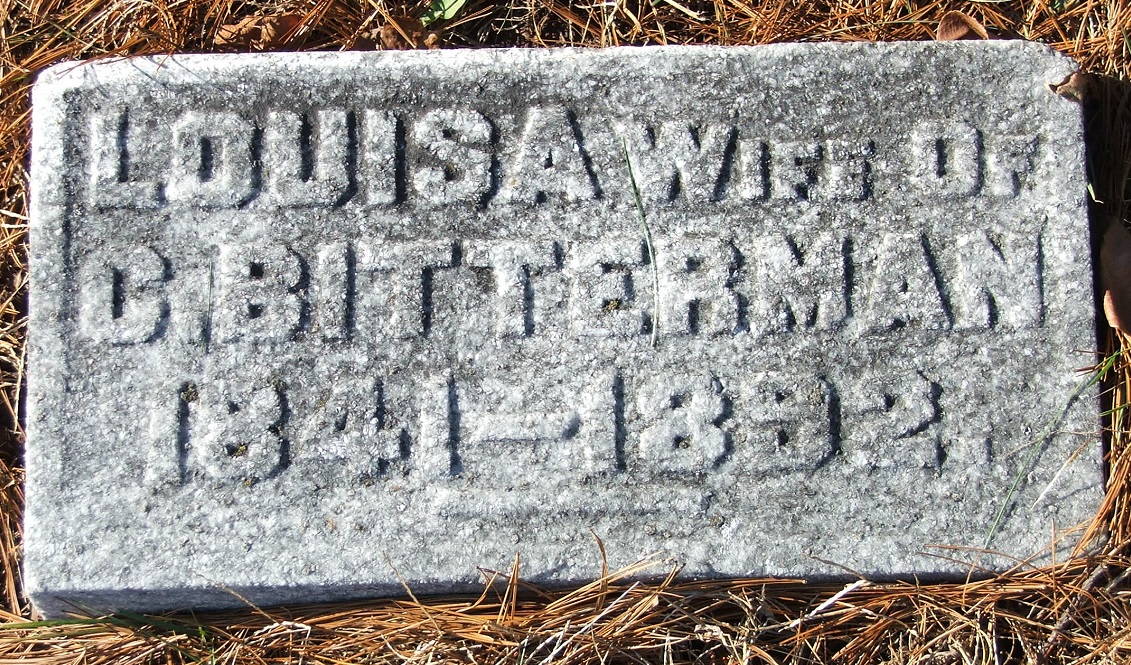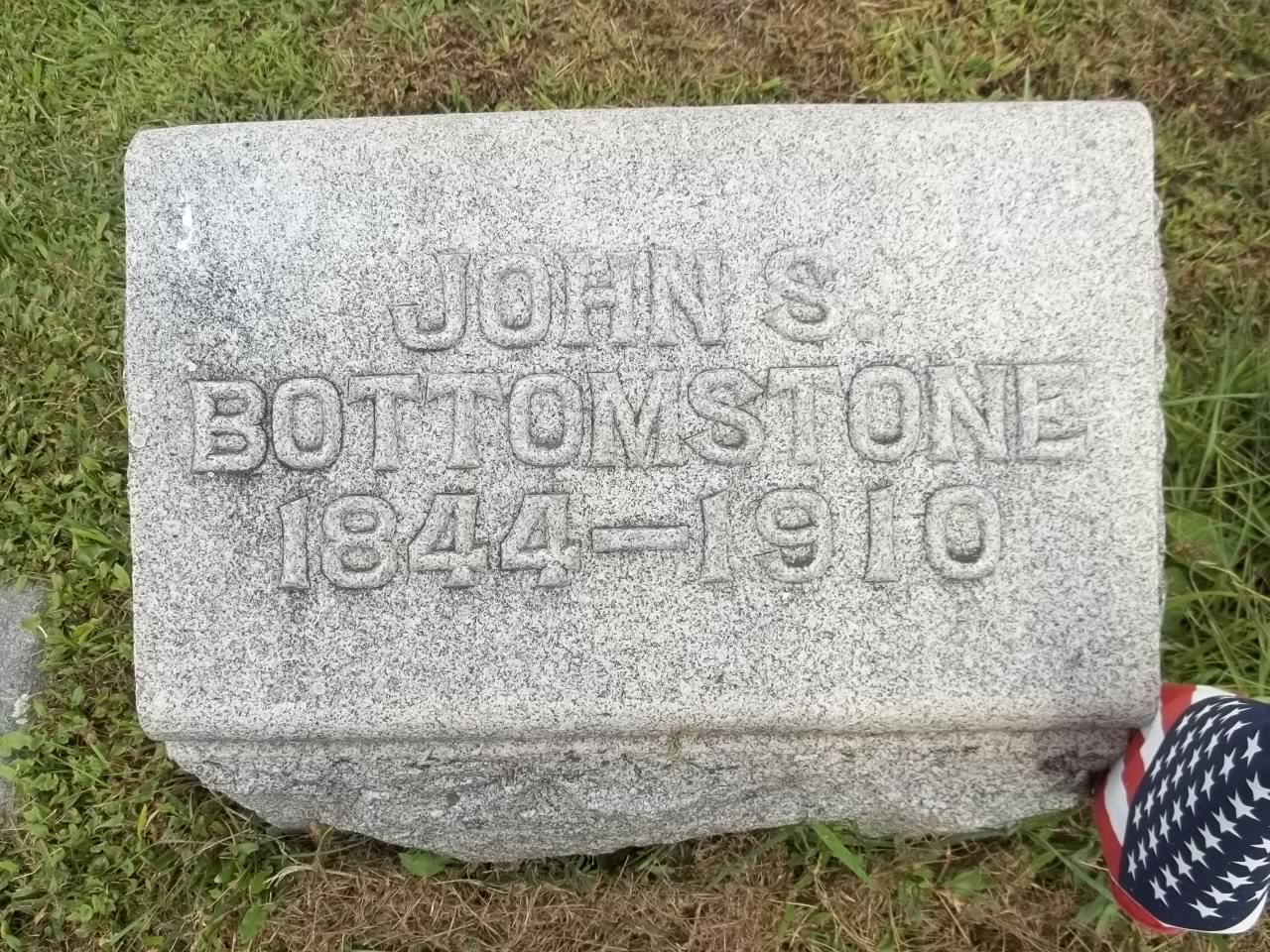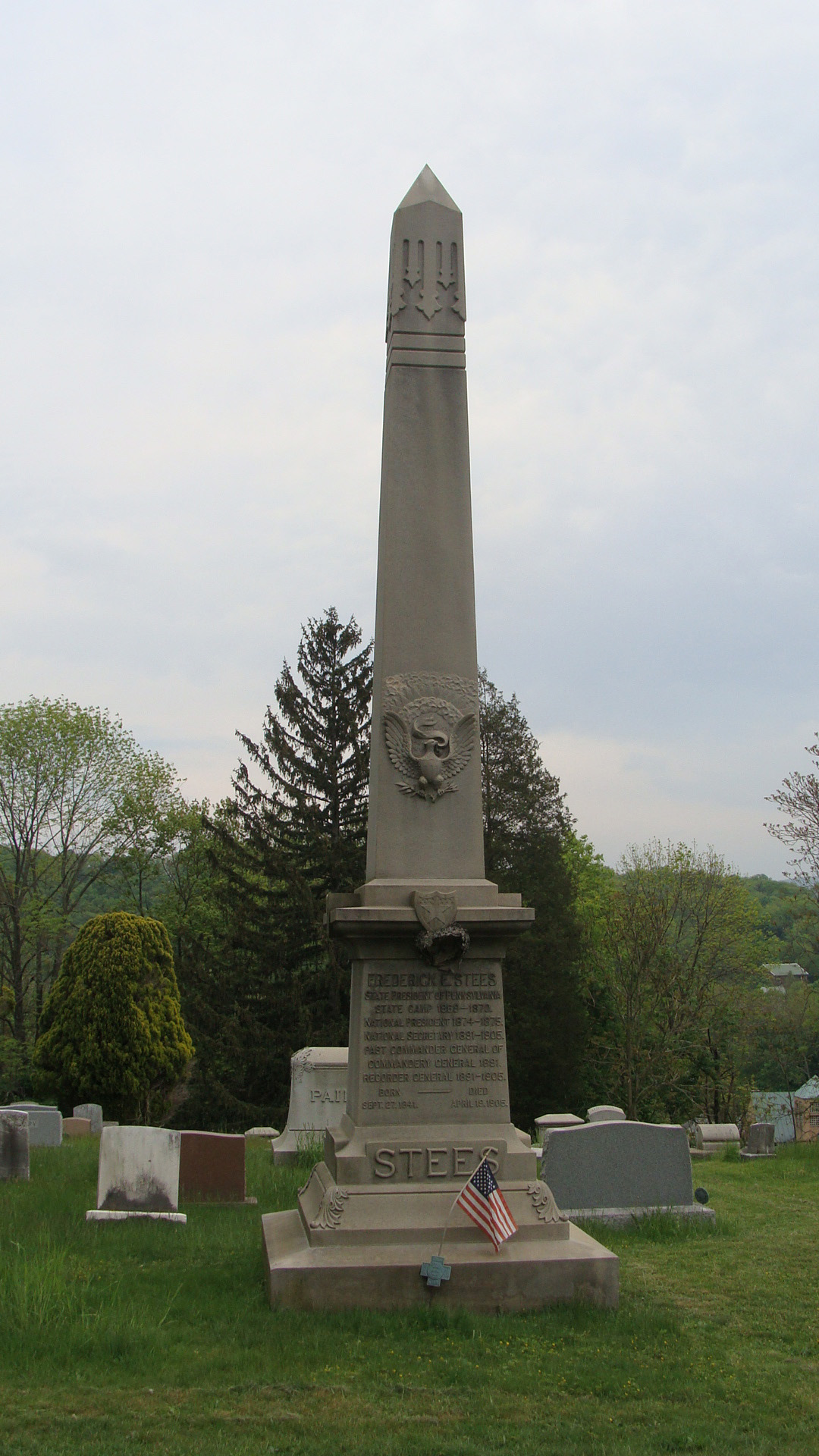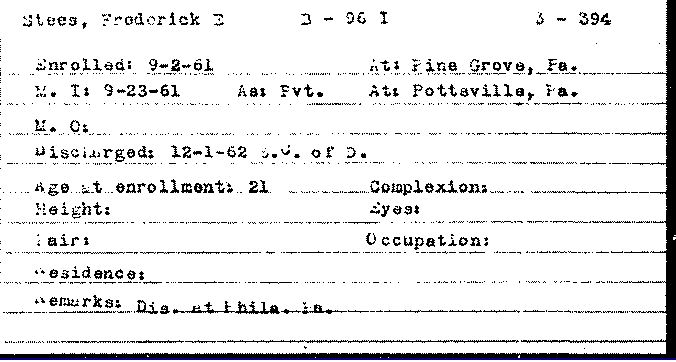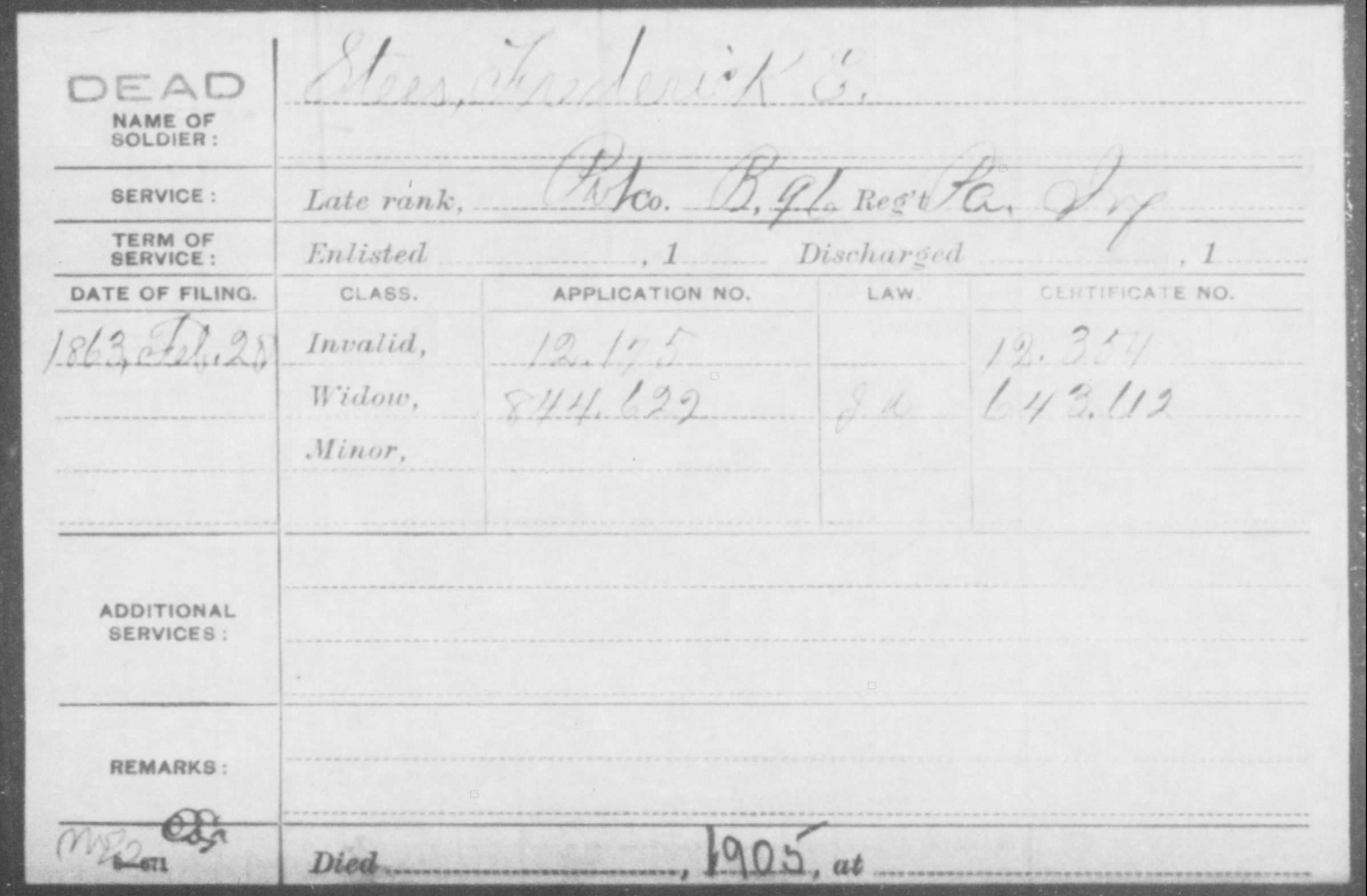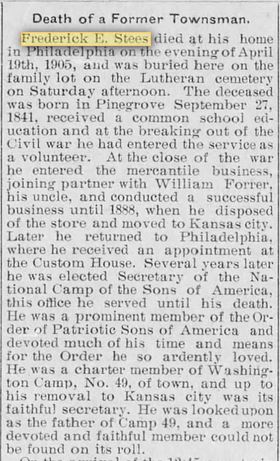Benjamin Bixler – Wins Land Case in Pottsville Court, 1893
Posted By Norman Gasbarro on August 15, 2018
Benjamin Bixler, Civil War veteran, died on 18 April 1901 in Tower City, Schuylkill County, Pennsylvania. He is buried at St. Paul (Artz) Cemetery, Sacramento, Schuylkill County. His grave marker notes his service in Company G, 107th Pennsylvania Infantry. He was a private in that regiment, and according to the Veterans’ File Card from the Pennsylvania Archives, he served from 28 February 1962 through his honorable discharge on 28 February 1865:
At graveside, there is also a G.A.R. star-flag holder.
However, other information indicates he may have also served in the 173rd Pennsylvania Infantry during a time he was supposed to be serving with the 107th Pennsylvania Infantry. The card below shows service for a Benjamin Bixler in the 173rd Pennsylvania Infantry:
There are no dates on the second card. Referring to the Steve Maczuga Database, the dates of service were from 1 November 1862 through 16 August 1863.
From the Registers of Pennsylvania Volunteers, Pennsylvania Archives, the above shows that the Benjamin Bixler who served in the 173rd Pennsylvania Infantry was 33 years old, almost the exact age of the Benjamin Bixler who served in the other regiment. Was it the same person?
In the West Schuylkill Herald, 30 May 1901, a listing of “Our Deceased Heroes” who were buried in “the various cemeteries in this vicinity.” The list concludes with some who “have died recently and are buried in out of town cemeteries.” The list concludes with Benjamin Bixler, Company F, 173rd Pennsylvania Infantry, buried in Artz Cemetery, Sacramento. Nothing is mentioned about the 107th Pennsylvania Infantry which is marked on his gravestone.
Finally, the Pension Index Card, from Fold3, indicates both regiments as previously indicated, the dates for the 173rd Pennsylvania Infantry, 1 November 1862 to 16 August 1863.
But there are no dates of service given on the second card which was filed with the pension records of the 107th Pennsylvania Infantry.
The conclusion that can be drawn from this is that the dates for the 107th Pennsylvania Infantry on the Pennsylvania Veterans’ File Card are probably wrong.
No second person named Benjamin Bixler, born about 1828, has been located in Schuylkill County. Which led to the conclusion that the following story about a man named Benjamin Bixler who was the plaintiff in a land title case in Pottsville court was the same Benjamin Bixler who was the Civil War Veteran described above.
From the Daily Miners’ Journal, Pottsville, 5 June 1893:
AN IMPORTANT LAND CASE
A Suit Hung Up in the Courts for Six Years
An important land case which has been pending trial eleven years and been on the long cause list for the last six years, was finished before Judge Weidman Saturday evening. The plaintiff’s counsel was Joseph W. Moyer, Esq. William A. Marr, Esq., represented the defendant. The jury returned a verdict in favor of the plaintiff at 5 P.M.
This was an ejectment case of Benjamin Bixler again George Strausser and Daniel Maurer for the possession of a forty-two acre farm in Eldred Township, occupied by Strausser, though it was shown that he conveyed it to Maurer, his son-in-law, in 1879, while he was indebted to the plaintiff. Bixler showed the conveyance was a fraud and based his claim to the property on the purchase of a farm from Strausser in 1873. This farm is located in Northumberland County. Strausser gave Bixler a general warranty. After this Strausser’s brother sued him and Bixler together in the Northumberland courts farm and recovered a portion of it, the sheriff putting Bixler off the property. Thereupon Bixler brought suit on the strength of the covenant in his deed, and recovered a judgment of $1,285 against George Strausser, and sold out the Eldred farm. The verdict gives Bixler title and ownership and wipes out deeds, mortgage and assignments, which the jury, by their verdict said were fraudlent.
__________________________________
News articles are from Newspapers.com.
 ;
;
